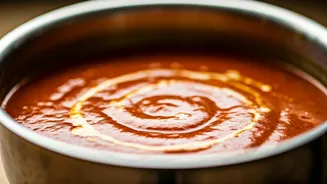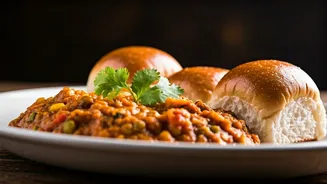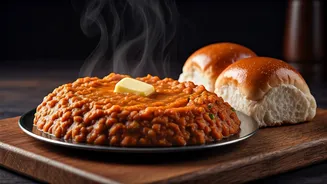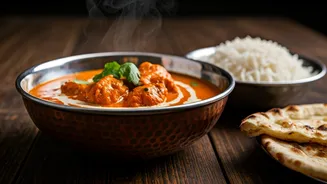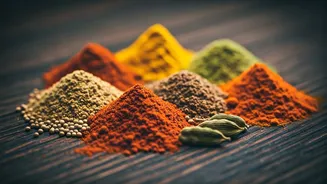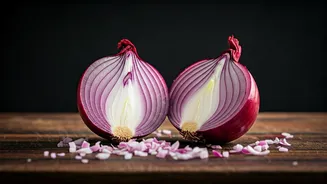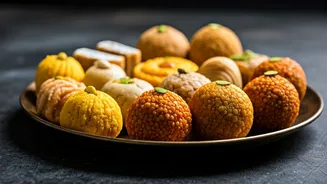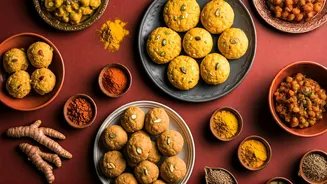Understanding the Problem
Lumpy curries are often caused by several factors, starting with how ingredients are added and how they interact. Improperly bloomed spices can clump,
and adding ingredients too quickly, especially liquids like water or coconut milk, can lead to uneven textures. Another common mistake is inadequate stirring, which prevents uniform cooking and blending. The type of ingredients themselves also play a vital role. For example, some ingredients, if added in incorrect proportions, can lead to undesirable textures. Understanding these root causes is the first step towards achieving a smoother, more enjoyable curry experience.
Spice Bloom Matters
Blooming spices correctly is a crucial step towards a flavorful and smooth curry. Start by heating oil in your pan, then add whole spices like cumin seeds or mustard seeds. Allow them to sizzle and release their aroma before adding ground spices like turmeric, coriander, or chili powder. This process helps to extract their flavors and prevent clumping. Ensure the heat isn't too high, as this can burn the spices, resulting in a bitter taste and potentially contributing to a grainy texture. Gentle heat and constant stirring are essential to achieve an even bloom and prevent any lumps from forming in your base.
Liquid Addition Techniques
How you add liquid is fundamental to achieving a smooth curry. Adding liquids too quickly can shock the other ingredients and lead to uneven cooking and clumping. Instead, add liquids gradually, stirring constantly. This allows the ingredients to incorporate properly and prevents lumps from forming. If using coconut milk, ensure it's at room temperature before adding it to prevent curdling. For water, consider using hot water instead of cold to maintain the cooking temperature and aid in blending. Patience and a gentle approach are key to creating a velvety, lump-free curry.
The Stirring Imperative
Consistent stirring is essential during the entire cooking process to ensure all ingredients are evenly distributed and cooked. Frequent stirring prevents ingredients from sticking to the bottom of the pan, which can lead to burning and uneven textures. Stir especially often when adding liquids, ensuring everything is well combined and preventing lumps. Use a spatula or wooden spoon to scrape the bottom and sides of the pan, incorporating any stuck bits. The more you stir, the smoother your curry will become, and the more harmonious the flavors will blend together.
Emulsification Mastery
Emulsification, the process of blending two normally immiscible liquids, is key to achieving a smooth curry. The key is to blend the ingredients. If your curry is still lumpy, even after following the above steps, you can try using an immersion blender. Be careful not to over-blend, as this can alter the texture. Another technique is to pass the curry through a fine-mesh sieve. This removes any lumps and creates a velvety texture. These emulsification techniques can rescue a lumpy curry and restore it to its smooth potential.
Ingredient Considerations
The ingredients themselves can influence the smoothness of your curry. For example, using fresh, high-quality ingredients can contribute to a better final texture. When using tomatoes, consider using pureed tomatoes or freshly blended tomatoes rather than using large chunks, which may not break down evenly. Similarly, when incorporating onions, cook them until they are softened and caramelized to prevent any raw texture. If using yogurt or cream, temper them by adding a small amount of the hot curry to them before mixing them into the whole dish to prevent curdling. Choosing the right ingredients and ensuring they're properly prepared helps you achieve the perfect texture.
The Right Equipment
The tools you use can significantly impact your curry's smoothness. Use a heavy-bottomed pan to ensure even heat distribution. This prevents hot spots that can cause burning and uneven cooking. Also, invest in a good-quality spatula or wooden spoon for effective stirring and scraping. An immersion blender or regular blender will be helpful for achieving a smooth consistency if lumps appear. A fine-mesh sieve is another valuable tool for straining any remaining lumps. Having the right equipment ensures that you are adequately prepared and makes it easier to achieve the desired result.
